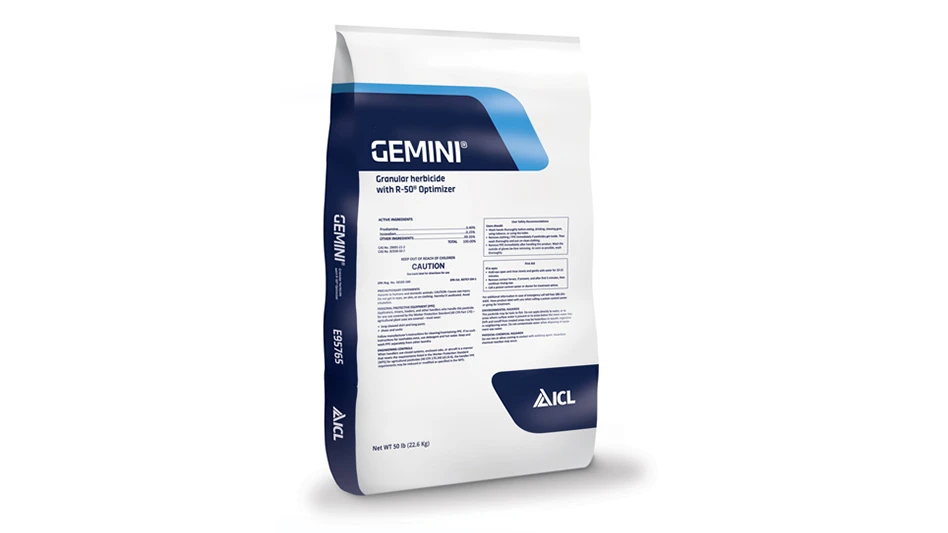
When you run a greenhouse growing operation, you have a lot of decisions to make on a daily basis to address both short-term and long-term needs. Operational efficiency is key, as is good and ethical management of your resources so you can make a satisfactory profit. Reliable and predictable product mixes are a big part of being both efficient and profitable.
Deciding which plants to grow and sell, and how you mix your offerings, could be the most obvious and important decision a grower must make. Your product mix can ultimately make or break a business. Yet, I’ve often seen availability lists go on autopilot for years while a business spends its time focused on many internal operational functions. However, not taking the time to track, analyze and forecast a fresh product selection can damage your brand and suffocate your sales.
Don’t get too comfortable
It’s easy to get comfortable with a safe or predictable product mix, and there are often good reasons to keep older, reliable varieties on your list. Those same safe choices, however, may get stale with your customers and lose traction in the market over time. Your offerings can be the source of inspiration and success for your customers — or a source of great frustration. Blending your need for reliability as a grower with your customers’ needs for new and inspiring options can be tricky, but it is necessary.
How often you change your product mix will of course vary depending on your market and your risk tolerance. Andrew Bruce, manager at Bruce’s Greenhouses in Blythewood, S.C., has seen the benefits of shaking things up a bit more often. They are currently in their third consecutive year of the changes and each has been more successful than the last, Bruce reports. “In the last couple of years, our product mix has changed and become more diverse each year,” he says. While that doesn’t mean they change a big chunk of their selection each year, they do work to gradually increase diverse offerings. “It has never been a high-percentage change at once but it has been noticeable as our sales reps and customers have noticed and been complimentary of the changes,” Bruce adds.
Retailers, landscapers and their customers need reliable choices, too, but they’re also looking for what’s fresh and relevant based on current trends. Keeping your product mix fresh keeps you relevant and helps you better serve your customers. “We have a few primary items that are the anchors of what we offer and that has not changed,” Bruce says. “However, the slight changes to the rest of the product line has made a major difference to the bottom line.”
Testing… testing
Plant trials, both internal and external, greenhouse and field, can inspire confidence in a new product mix. “Our trial gardens are a living laboratory of learning,” says Carrie Wiles, marketing manager at North Creek Nurseries. “Not only for our employees, but also our customers and sales reps that visit throughout the spring, summer and fall.”

North Creek likes to shake it up. Wiles says that their product mix is a combination of cultivars and selections new to the market, tried-and-true classic perennials and items that are unique to North Creek’s plant palette. This variety provides customers with reliable choices, plus fresh options.
Knowing how plants will work (or not work) in a variety of settings and in groups is also key to fine-tuning your mix. Wiles says North Creek goes the extra mile by incorporating a variety of trial styles, including, “Traditional side-by-side shade and sun evaluations and functional plantings such as our rain garden, bioswale, meadows, green roof, living wall and stormwater management systems,” she says.
Bruce also notes that he and his staff spend several hours watching video coverage from California Spring Trials. “Often we only pick up one or two items, but we have found that work to be worth the time,” he says.
Don’t dig your heels in
Resistance to changing a product mix or taking on new plant varieties often relates to production or shipping concerns. Then there’s the perceived expense of new varieties and unknowns when it comes to sales potential or garden performance. All production challenges, costs, overhead and market trends need to be considered when making crop decisions, of course, but don’t pass up a good opportunity because you think it’s too expensive. Simply because a new variety may cost you more to produce, doesn’t mean you won’t get your markup. People are willing to pay more for what they want. Just ask your retailers.
Wiles says that plant trialing allows North Creek to make the best decisions when it comes to adding new product to their catalog. “We learn from the plant’s performance and vigor and/or lack thereof. We can truly stand behind the information we are providing our customers and those extra bits of information are very much appreciated by our customers,” she says. The ability to provide additional marketing information adds value to their offerings.
Forecast for fashion
Some years are “white years,” and you can’t keep white petunias on your benches. The next year, red is the hot color, but customers want red flowers on perennials instead of annuals. The popularity of annuals versus perennials fluctuates, as do preferences for flower color, foliage color and plant height. Wouldn’t it be great if you had enough of what’s “hot” to take advantage of real-time demand?
Here in Dallas, you’d better make sure you have subscriptions to Southern Living Magazine, Garden & Gun and Martha Stewart Living because you can bet that at some point, end consumers are going to ask their retailer or landscaper for plants they’ve seen featured in these popular publications.
Tighten up
Precision in inventory tracking has been a major influencer on how Bruce’s Greenhouses has approached changes to their product mix. “When it comes to inventory tracking [we ask], How long did the product sit ready in the greenhouse? Did one item, color, or combination move faster relative to others planted the same week?” Bruce says. Collecting such data helps the company make much more strategic and profitable growing decisions.
If you’re closely tracking sales trends and paying attention to aesthetic trends in other industries such as fashion and interior design, you can often forecast next year’s preferred hues and popular landscape design styles. Combine your precision inventory data, market research and results from plant trials, and you’ll have a powerful sales and marketing tool.
Gardening is local
An in-depth knowledge of growing conditions within your sales region is critical to a relevant product mix. If water conservation is mandated in your area, then your product mix will need to evolve to provide more water-wise solutions. That may mean you offer fewer thirsty annuals and boost your selection of low-maintenance perennials.
If container gardening is experiencing a boom in your urban areas, a bigger selection of flower-heavy annuals and edibles may better serve customer needs. Have a dense population of shade trees in your hot climate? If so, your customers are probably looking for more shade perennials with interesting foliage and flowers, plus alternatives to impatiens for annual shade color. That’s when supporting and making regular visits to your local university or public garden plant trials comes in handy.
Go long
If your sales territory is national, then national trial data is a must. Programs such as All-America Selections provide excellent data and marketing for both old favorites and new arrivals that can be utilized by growers across the country. At North Creek, they understand the value of using information generated from outside trialing programs. They currently work with other trialing programs across the country such as Chicago Botanic Garden, Penn State Extension, UGA Trials and Mt. Cuba Center.
If you’re in the business of developing and bringing your own new plants to market, expanding your trial capacity and participation can have significant benefits. Jeremy Windemuller, Walters Gardens’ trial manager, agrees. “We think it’s very beneficial to trial our plants in multiple locations and climates to show how well they do nationwide,” Windemuller says. “This is true especially with our relationship with Proven Winners.”
Start to finish
Walters Gardens is keen on making sure that plants they trial perform at all stages of production and sales. Windemuller notes three methods of trialing: 1) in-ground trials to test garden performance; 2) finished container trials to know if customers will be successful with a new variety; and 3) production trials to know if they can be successful in the sizes that they offer (both small greenhouse plugs and bare root/field trials).
Group effort
Don’t forget to involve your retailers, designers and landscapers in decisions about your product mix.
As Bruce says, “They are closer to the pulse of the consumer than I ever will be.” Your retailers are on the front lines and are doing their best to meet end-consumer expectations, but they can’t deliver on their brand promise when they can’t find the plants they need to satisfy customers and bring their designs to life. Annual and perennial combinations for both sun and shade are on their list, as are plants that work well together for combination succession plantings, plants for wildlife support, dwarf flowering shrubs, ornamental edibles and on-trend flower colors.
In fact, IGC relationships are at the top of the product mix influencer list at Bruce’s Greenhouses.
“I try to go out and visit as many as possible during their slow periods once or twice a year just to talk about how their seasons went, what they liked from us, what trends they were noticing, and so on,” Bruce says. If he notices a pattern from multiple conversations that they make a slight change in that direction. “That has been incredibly beneficial,” he adds.
While it’s easy to keep the focus on your internal operations when making decisions about your product mix, your success ultimately depends on whether that mix is useful and inspiring to the end consumer.
Be sure to take advantage of both the functional data and marketing opportunities provided by plant trialing programs when you reboot your mix.

Explore the December 2016 Issue
Check out more from this issue and find your next story to read.
Latest from Greenhouse Management
- 2025 Proven Winners Horticulture Scholarship applications now open
- How to improve inventory and shipping management in the greenhouse
- Leading Women of Horticulture: Anna Ball, Ball Hort, and Terri McEnaney, Bailey Nurseries
- GM CEA HERB Part 2: A guide to increasing the sowing density of culinary herbs
- GM CEA HERB Part 1: Best practices for producing culinary herbs in controlled environments
- USDA fires experts on invasive pests, including Asian citrus psyllid, chilli thrips
- CEA Alliance celebrates bipartisan introduction of Supporting Innovation in Agriculture Act
- Dümmen Orange North America celebrating 25th anniversary in 2025












